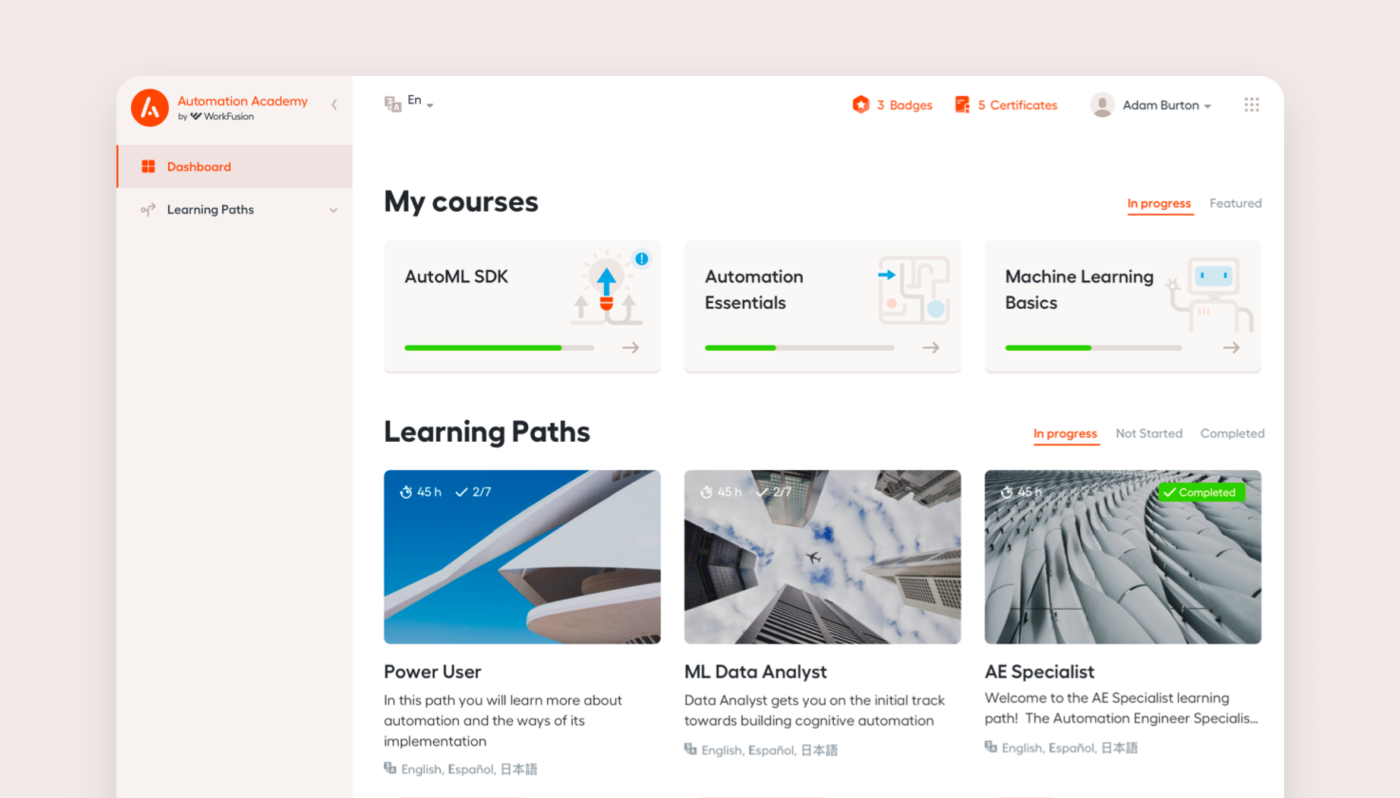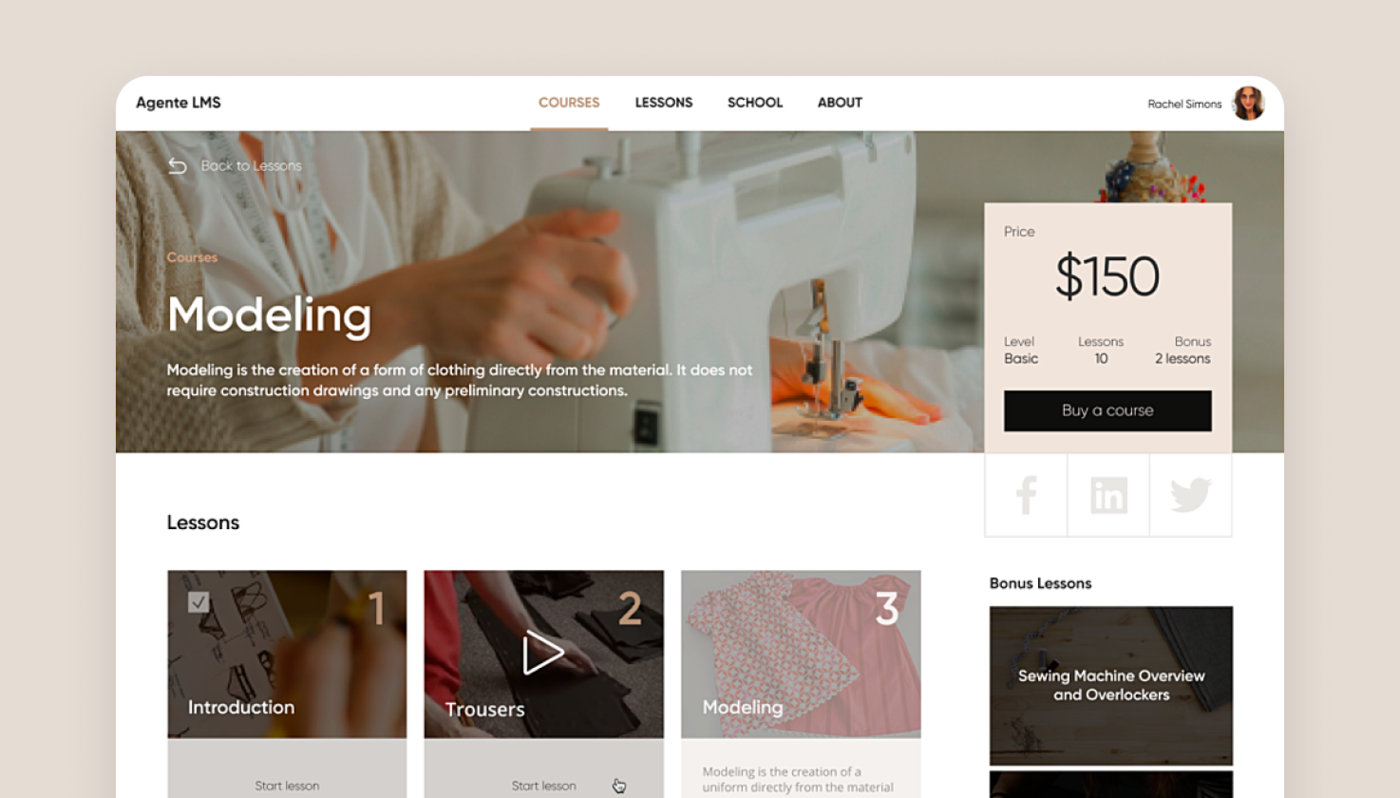The global digital classroom market has already reached a value of US $94.08 and continues to grow. Overwhelming online education brought along its problems: a lack of effective classroom management, collaboration, and monitoring tools. However, educational managers in schools, colleges, universities, and companies may find online education as seamless as it is offline thanks to digital classroom management systems.
In this article, we’ll talk about the benefits of digital classroom management software for different user types, its features, and will give a step-by-step guide on how to develop such systems.
Digital Classroom Management Software Features

Source: Dribbble
Some features of digital classroom management systems may differ depending on whether it is a university management software, school administration, or corporate eLearning management system. Identifying and addressing the risks in software development early can ensure these systems are reliable and effective across different educational settings.
However, there are features inherent in each of them.
Basic Features
- Advanced monitoring tools. Software for classroom management makes tutors constantly aware of all the activities that students are performing during their learning journey. For example, a tutor can import the name list of students, launch the sign-in operation, and compare the sign-in list with the name list to obtain attendance. During the lecture or test, the tutor can restrict students’ usage of CDs, USBs, websites, applications and printers to maintain class order. And finally, tutors can monitor and control students’ screens.
- Ability to perform on multiple devices. The software you choose should be multi-device friendly because multiple types of devices are used by the tutors, students, and administrators, and it is not at all practical to execute software that works only on desktops.
- Peer-based learning model. The tutor has the facility to broadcast the screen of their device to the students, and they can also share a student’s screen with the rest of the class. In this way, classroom management system software promotes a peer-based learning model in which teachers augment students’ engagement ratio in the class.
- Private chatting. Sometimes, too many questions from a single student can keep the entire class waiting. Classroom management software solves this problem by allowing tutors to provide immediate assistance to a specific learner via a private chat feature during lessons. In this case, the student gets answers without disturbing or hampering the entire class.
- Teamwork. Classroom management software is designed to help tutors classify students into teams and assign each team a set of tasks. Other teamwork activities which tutors can conduct are quizzes, tests, and assessments.
Additional Features
- Immersive education. Digital classrooms can use augmented and virtual reality not only to gamify the learning process but also to help students to focus. One of the major benefits of VR and AR in the classroom is that not only are students immersed in their work, but they can also block out other distractions. It makes the technology ideal for educators who work with people who have varying levels of ADD/ADHD.
- Gamification. It means applying game-design elements and game principles in non-game contexts. Points, badges, levels, progress bars, leaderboards, and rewards make students more competitive and give them a sense of achievement after accomplishing a certain task.
Tech Stack to Build a Classroom Management System
When building a classroom management system, it is important to choose the right tech stack. Building a classroom management system using Python, Java and Ruby is a popular choice. These languages provide strong frameworks and libraries capable of managing the features required by such a system. A database management system, such as MySQL or PostgreSQL, is also essential for storing and retrieving student, teacher and class-related data.
The most commonly used languages for front-end development are HTML, CSS and JavaScript. These languages allow the creation of intuitive and visually appealing user interfaces. JavaScript frameworks such as React or Angular can be used to enhance the user experience and provide interactive features.
The server-side framework is an essential part of the tech stack. Software developers can build secure and scalable classroom management systems with a strong foundation thanks to options such as Django (which uses Python) and Spring (which uses Java). These frameworks provide support for managing user authentication and authorisation, as well as built-in security features.
Finally, deploying the classroom management system requires a reliable hosting service provider. Options such as Amazon Web Services (AWS) or Microsoft Azure offer scalable infrastructure solutions that ensure the system can handle high traffic loads during peak usage periods.
How to Build a Classroom Management System
Online classroom management software development is a six-step process: the discovery phase, UI & UX design, software development, quality assurance, release, and support of the developed product.
- Discovery phase. This initial step includes both design and technical discovery. During design discovery, we create user personas and user stories, building information architecture, user flows, and low fidelity wireframes. Technical discovery involves writing documentation about general data flow, project architecture, technological set, development and QA principles.
- UI & UX design. We have already defined target users and the goals the system should meet. Now, with this knowledge in mind, we create UX wireframes, prototypes, and high-fidelity (detailed) UI mockups that define the final look of the classroom management system.
- Software development. First, we create a product requirements document (PRD) that communicates the capabilities that must be included in a product release to the development and testing teams. After that, our software engineers develop the front end (what users will see in the application) and the back end (the server side) of the system.
- Quality Assurance. Our QA specialists carefully develop a test strategy, a plan and all test scenarios possible. After the scenarios have been executed, the QA team writes a detailed test summary that gives evidence to support the decision of whether or not to move forward with the product as it is.
- Release. When the QA team concludes that the classroom management system is ready to see the world, the full-featured software is deployed. It may be initially deployed for a limited number of users to see how it behaves and then returned to the development team to fix issues and make updates.
- Support. Our job is not finished with the deployment. Agente guarantees 3- to 6-month support after the release date.
Read also: Education Technology Trends to Watch in 2023
Custom Digital Classroom Management Software Development Cost
The cost of developing custom digital classroom management software depends on a number of factors. Firstly, the complexity and scope of the software will be a key factor in determining the cost. A software with advanced features and more complex functionality will require more time and resources for the development, which typically results in higher costs. Secondly, any additional customization requirements can also influence the overall cost. That is why it is essential to consider these factors prior to project start and work closely with the experienced development team to create a realistic budget for custom digital classroom management software.
Agente Experience
We have experience in creating virtual classroom management software that helps employees explore cultural diversity, learn intelligent automation and RPA, and discover microlearning capabilities, as well as helping Internet users to link with mentors in various spheres, and to collaborate with students and tutors in a whole range of subjects.
Take a look at some of our projects:
- Automation Academy by Workfusion. We redesigned the platform, rebuilding information architecture, user flow, and added custom illustrations.

Source: Agente case
-
LMS for Marketing Courses. We offered a turnkey eLearning solution with UX/UI design, HTML coding, LMS software development, QA, and support.

Source: Agente case
-
Academy Dressmakers. We also offered a turnkey LMS solution that included UX strategy building, information architecture, product design, HTML coding, and eLearning platform development of the system’s functional modules.

Source: Agente case
For the Finale
We expect digital classroom management software to gain momentum as it provides seamless collaboration between students and teachers, as well as effective educational management, which will be especially important in a post-COVID world.
If you are an educational institution or a company searching for tools to streamline your learning processes, Agente is your end destination. We develop the best classroom management software that caters for the needs of businesses/establishments, tutors, and students.



















